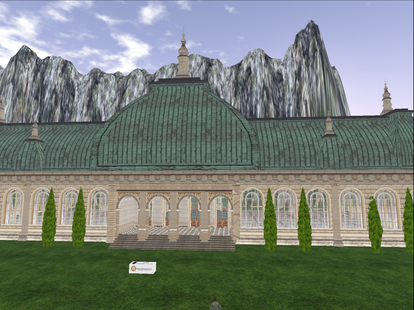ENAA30 or how to organize a scientific conference in times of a pandemic
- Tiago Campante
- Sep 12, 2020
- 4 min read
These are weird times we live in. A cliché, most certainly. When, back in May, we decided to move ahead with the organization of the 30th Portuguese Astronomy and Astrophysics Meeting (ENAA30) and make it a fully online event, a number of questions crossed our minds. How can we make this meeting enticing, both from a scientific and social point of view? Aren't we running the risk of getting depressingly low attendance figures? The Portuguese astronomy community isn't that large after all, if one thinks in absolute terms. Even once we bring in the expats. And what about the technical side of things? What online platform(s) to use? And are they robust enough?
We were definitely not deterred by this. Quite the opposite. Innovative ideas started thriving among the members of the Organizing Committee (OC). We felt we could make this a meeting to remember, even though we had been dealt a bad hand to begin with. Soon, we realized that the success of the meeting would need to rely on three strong pillars. Let's dub them Scientific, Technical, and Social. Divide et impera (divide and conquer). And that's what we did. We split the OC accordingly into three subcommittees, namely, the SOC, the TOC, and the SoOC, each with its own chair. Communication across subcommittees and with the OC chair flowed smoothly through email and a dedicated Slack workspace. Alea iacta est (the die has been cast). Sorry for my latin ramblings:)
The SOC/TOC: How can we make the science sessions an engaging forum?
We decided to organize talks thematically into six plenary sessions:
Session A: Solar & Stellar Physics
Session B: Galactic & Extragalactic Astronomy
Session C: Planetary Science
Session D: Astronomical Instrumentation
Session E: Cosmology & Gravitation
Session F: Science Communication & Education, and History of Astronomy
Sessions were distributed along three days, with two sessions per day (mornings only). After all, we did not want to overwhelm people with a full-day online program. So far so good, but there's more to it. We thought that having two chairs per session would make things smoother, one in charge of managing the Zoom room where talks were to be presented, and the other keeping track of questions posed in writing through a dedicated Slack channel. This worked perfectly! Still, the packed scientific program meant that we would be tight in terms of time. And so we made the unorthodox decision of not having a Q&A between talks. Instead, a Q&A was deferred until the extended discussion slot at the end of each session. Here, people who had beforehand posed their questions through Slack were given the chance of voicing them. I must confess that we were not completely sure this format would work, but it did, making each session a dynamic and engaging forum. SOC/TOC: 1, total mayhem: 0.
And what about posters? Shouldn't there be poster sessions? Of course, let's have virtual poster sessions during the coffee breaks! Now, that's bold. And that's when someone pointed out that Mozilla Hubs could provide the solution. One could access ENAA30's VR Hallway in Mozilla Hubs and navigate from there to one of several poster rooms by directing their own avatar. Hubs allows you to engage in voice conversations with your fellow avatars. This way, people (or should I say, their avatars) can stand by their posters and talk to others about their work. All of this, while lying in pajamas on their beds:) The images below show the VR Hallway and one of the poster rooms. The video is a tutorial produced by the TOC. Ah, of course, SOC/TOC: 2, total mayhem: 0.
The SoOC/TOC: Flawless, we need to be flawless. And, why not, let's make it memorable!
SoOC/TOC: You know what? It can't be dubbed a conference if there's no conference lunch/dinner.
Random person: No way you gonna pull that off.
SoOC/TOC: Hold my beer!
Those of you in their late 30s and over will remember Second Life Virtual World. That's where we headed out for lunch to celebrate ENAA's 30th anniversary. The venue: a seemingly low-key palace:) The images below show the outside of the venue and Jarle Brinchmann's (OC chair) avatar in a Bondian look navigating the display of ENAA memorabilia in one of the rooms. Other perks included a live DJ and on-demand songs. It was fun.
Final remarks
Despite the current restrictions to our daily lives, this was an ENAA to remember, bringing together an excellent scientific program (see here) and a truly innovative social program. A few stats:
There were 152 registered participants. BSc/MSc: 42, graduate students: 27, early-stage researchers (< 3 years after PhD): 14, researchers: 37, faculty: 22, other: 10. This corresponds to an impressive 80% increase in the number of participants compared to last year's meeting.
The typical number of participants attending each session was of about 80, at times peaking above 90.
Overall pressure factor on abstract submission: 1.9.
15 out of the 30 contributed talks were by young researchers (early-stage and younger; see above).
Work well done, everyone!
The Organizing Committee:
Jarle Brinchmann (OC/TOC chair)
Tiago Campante (SOC chair)
João Retrê (SoOC chair)
Vardan Adibekyan
Cirino Pappalardo
Pedro Machado
João Fernandes
Bachar Wehbe
Polychronis Papaderos
Lara Sousa
Giuseppe Fanizza
João Faria
Sonia Antón
Manuel Monteiro
Elsa Silva
André Moitinho














Comments